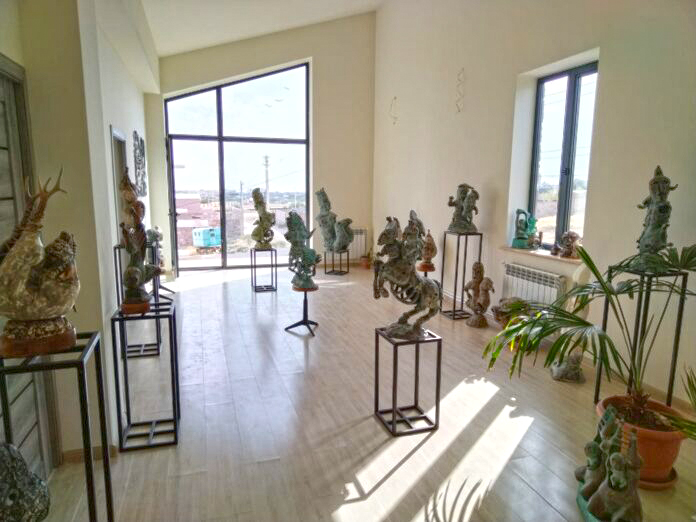
The gallery is replete with sculptures
Arman Hambardzumyan Opens Unique Atelier
by Muriel Mirak-Weissbach
Armenian Mirror Spectator
YEREVAN, AUGUST 10, 2023 — About 10 kilometers from the center of Yerevan in a village called Zovuni a new cultural initiative has come into being, which merits the attention of artists and art lovers. It is the home and studio of Arman Hambardzumyan and his wife, Lusine Sargsian, designed and built by the artist himself. Not only is it a residence and atelier, but also an active cultural center which will host exhibitions, discussions about art, and other activities. Since March, when the young couple moved in, they have received numerous guests, artists, art lovers, film figures, musicians, photographers, friends, and guests from abroad.
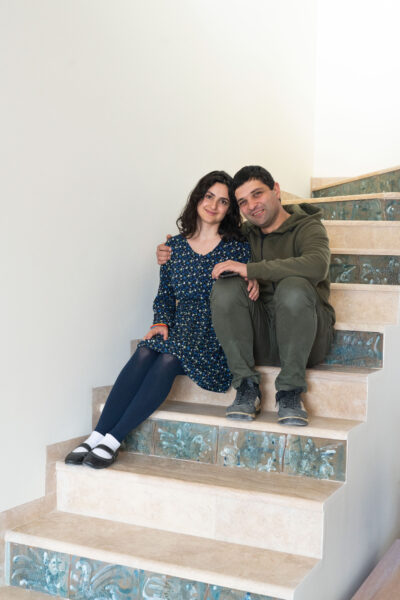
Arman Hambardzumyan and his wife, Lusine Sargsian
(Martina Sedda photo)
The multifunctional dwelling represents the fulfillment of a lifelong dream. Born in Yerevan in 1988, Hambardzumyan did not have a life of luxury. His father had always wanted to become an artist, but difficult conditions prevented him from realizing his ambitions. This had a decisive impact on his son, who “wanted at all costs to be an artist.” As he described it, this was something he “made clear even in elementary school.”
He recalls that, as a child, since he “had no toys to play with,” he simply made his own. This childhood creativity developed as he studied art, and is especially evident in his sculptures.
He did his undergraduate work at the Henry Igityan National Art Center from 2000 to 2005, then earned his bachelor’s and master’s degree at the Yerevan State Pedagogical University in 2009 and 2011, respectively. Since 2011, he has been a member of the Artists’ Union in Armenia and in the following year, he received the Laureate of the President Prize of the Republic of Armenia.
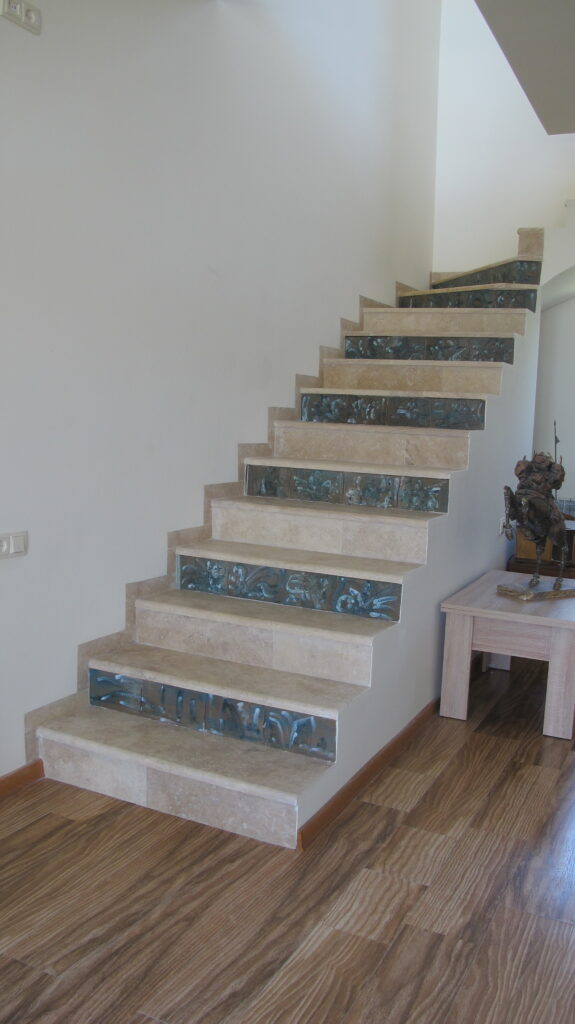
Stairs to the gallery, ceramic tiles and stones
Soon he began exhibiting his works in many European countries: in addition to homeland Armenia, his art appeared in Russia, Serbia, Moldova, Finland, France, Germany, the Netherlands, Italy, Malta, Greece and also in Lebanon. In 2017 he participated in the Art Expo in New York. Many of his sculptures and paintings are now on display in private homes and museums. It is through the sales of his works that he has been able to finance his building project.
I asked him to explain the concept of his architectural project and how it came into being. “In 2019,” he wrote, “I bought 500 square meters of land for the realization of my dream: to have a working space and to live together with my beloved wife. First, I drew the plan of the house-studio and designed it in 3D by myself. The procedure of the construction took several years.”
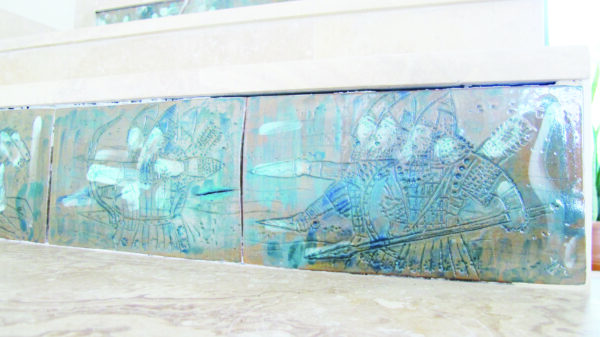
Detail of the stairs
Due to the Covid pandemic and conditions created by the war in Artsakh (Karabakh), he finished the project this year. “My main support in building a house in those difficult conditions,” he said, “was my sculptures.”
The completed house consists of three parts: a gallery with natural light from large windows, a studio with a high ceiling, and a residential area for the young couple. These three components united in one space, he explained, “represent my lifestyle: creativity, love and exhibitions for visitors.”
Most unique are the stairs leading to the gallery, which are decorated with a ceramic design that he created himself. It represents the history of Armenia, from the beginning up to the Artashesian (Artaxiad) dynasty (189 BC–12 AD). The scenes depicted start with vishapakars (so called dragon-stones), followed by Karahunj stones (from a prehistoric archaeological site of the same name known as the Armenian Stonehenge), petroglyphs and then continue to the battle between Hayk, the legendary patriarch and found of Armenia, and the tyrant of Mesopotamia and Elam, Bel (2492 BC), ancient deities, griffins, triumphal campaigns of the Urartian kings, up to the glorious history of Tigran the Great, of the Artashesian dynasty, who ruled as King of Armenia from 95-55 BC.
Why the focus of ancient history? As he explains on his website (www.arman-art.com), study of the distant past is what inspired his work. He has devoted particular attention to ancient Greece, and read the works of Heinrich Schliemann (1822-1890). The famed German archaeologist, who began as a businessman, had mastered numerous languages including ancient Greek. Steeped in the study of the Homeric epics, and following the poet’s depictions of the Trojan wars, Schliemann initiated excavations in the 1870s which led to fundamental discoveries at Troy.
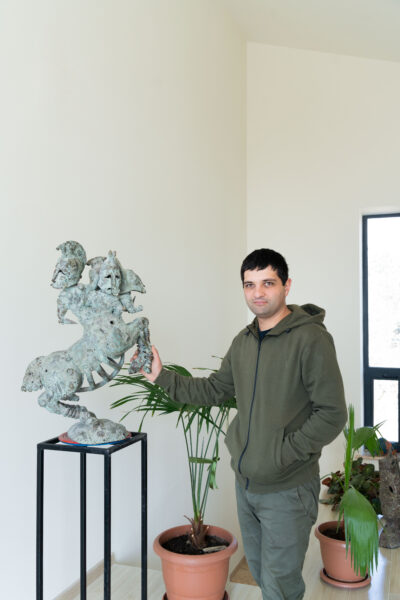
Arman Hambardzyumyan with the heroes of Troy
(Martina Sedda photo)
The artefacts of the era included works in glass, ceramics, and bronze, materials that Hambardzumyan would then work with, and not only in sculpture, but also in drawing, which he sees as a fundamental feature of his sculpted works as well. In his works, he depicts subjects from the ancient era, for example Greece; his sculptures of Hector and other Homeric figures display not only historical accuracy and insight into the philosophical tradition, but also humor and irony.
The young artist considers himself extremely fortunate to be able to work and live in his studio-home, the culmination of many years of study and hard work. And he is eager to welcome visitors. “The doors of my house-studio are always open for all of those who wish to be there.”